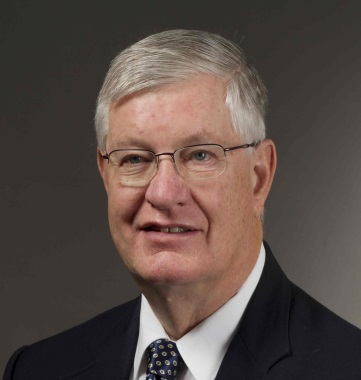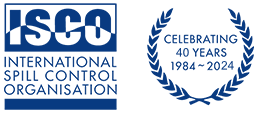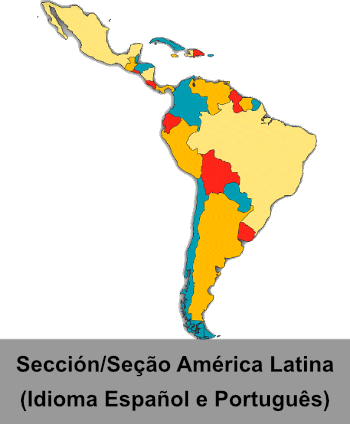This is part of a weekly column which provides the references and abstracts of new peer-reviewed scientific publications on oil spills.

Contributed by Dr Merv Fingas, this weekly column will provide the references and abstracts of new peer-reviewed scientific publications on oil spills. These references are selected on the basis of those papers that provide new insights into the fate, effects and control of oil spills.
Readers may choose to obtain the full publications and to do so, one of three methods is suggested; contact your library, search the internet with the DOI (digital object identifier) provided, or search the internet for the exact title. These are given in the order of likely success in obtaining the article. We hope that this provides useful information. Merv Fingas, ISCO colleague.
72 Floating treatment wetlands for the bioremediation of oil spills: A review, Stanley, M., Palace, V., Grosshans, R., Levin, D.B. (2022) Journal of Environmental Management, 317, art. no. 115416,
DOI: 10.1016/j.jenvman.2022.115416
ABSTRACT: Conventional oil spill recovery may cause significant damage to shoreline habitats during the removal of oiled material and from human and equipment interaction. In addition, these methods are costly and can leave a significant amount of residual oil in the environment. Biological remediation strategies may be a less invasive option for recovering oil from sensitive regions, with potential to increase recovery. Floating treatment wetlands are a growing area of interest for biodegradation of oil facilitated by plant-bacterial partnerships. Plants are able to stimulate microbial colonization in the rhizosphere, creating greater opportunity for contaminant interaction and degradation. A literature review analysis revealed thirteen articles researching this topic, and found that floating treatment wetlands have high potential to degrade oil contaminants. In some instances, plants and inoculated bacteria exhibited the highest degradation potential, however, plants alone had higher degradation potential than bacteria alone. Research is needed to explore how floating treatment wetlands perform in field-based trials and under variable environmental conditions.
73 Legacy and dispersant influence microbial community dynamics in cold seawater contaminated by crude oil water accommodated fractions, Hafez, T., Ortiz-Zarragoitia, M., Cagnon, C., Cravo-Laureau, C., Duran, R. (2022) Environmental Research, 212, art. no. 113467, .
DOI: 10.1016/j.envres.2022.113467
ABSTRACT: Dispersants, used for combating oil spills, increase hydrocarbon bioavailability promoting their biodegradation. Oil weathering process introduces harmful soluble hydrocarbons, such as polycyclic aromatic hydrocarbons (PAHs), into the water column, resulting in water-accommodated fraction (WAF). The presence of dispersants can influence the weathering process by increasing PAHs solubility, toxicity and biodegradability. However, little is known on how dispersants affect microbial communities and their degradation capacities, especially in cold environment where low temperature decreases microbial activity and thus hydrocarbon degradation. Here, we investigated the microbial community dynamics in cold water contaminated by WAF prepared from crude oil with or without a commercial dispersant (Finasol OSR52). The WAFs, prepared with Naphthenic North Atlantic crude oil, were used to contaminate seawater from Norwegian cold sites, one oil-contaminated and the other pristine. The WAF-contaminated seawaters were maintained in microcosms at 4 °C for 21 days. The content of PAHs and microbial compositions (16S rRNA gene sequencing) were determined at days 0, 7, 14 and 21. In addition, the 96 h toxicity assay with adult Acartia tonsa revealed WAFs toxicity at days 0 and 21. The toxicity of WAF mixtures, with and without dispersant, against Acartia tonsa was reduced during the experiment, but PAHs removal was not increased. The water from the oil-contaminated site showed the highest PAHs removal revealing legacy effect (presence of microorganisms adapted to PAHs). Additionally, our results reveal: i) microbial community plasticity allowing the adaptation to the presence of PAHs and dispersant, ii) specific bacteria taxa probably involved in PAHs degradation, and iii) dispersants shape the microbial communities dynamics by stimulating potential dispersant-degrading taxa, such as Fusibacter. Thus, our results provide valuable insights on the role of microbial community in determining the fate of water-solubilized hydrocarbon in cold environment while questioning the role of dispersant used for fighting oil spill.
74 Oil spills enhanced dispersion and transport of microplastics in sea water and sand at coastal beachheads, Gui, X., Ren, Z., Xu, X., Chen, X., Zhao, L., Qiu, H., Cao, X.
(2022) Journal of Hazardous Materials, 436, art. no. 129312, .
DOI: 10.1016/j.jhazmat.2022.129312
ABSTRACT: The coastal zone is being under the threat by accumulation of microplastics (MPs), with much of MPs ending up on the beachhead. Oil spills, which frequently happen in coastal zones due to oil pipe leakage or oil drilling, may affect the behavior of MPs in the beachheads. Herein, sea water and sea sand were collected from three different coastal beachheads including Bohai Sea (BS), East Sea (ES), and South Sea (SS), China, to investigate how the oil spills affect the dispersion and transport of MPs in sea water and sand. The oil spills greatly enhanced the dispersion of MPs in all three sea waters by forming MPs-oil-dispersant agglomerates, which increased the electrostatic repulsion and steric hindrance between MPs particles. Accordingly, the aggregation rates of MPs were reduced from 1.7–8.86 nm min−1 to 0.39–1.29 nm min−1. The lowest salinity and highest dissolved organic carbon content in SS sea water favored the highest dispersion of MPs, compared to BS and ES sea water. The improved dispersion of MPs with oil spills enhanced their transport in sea sand with an increase of effluent rates from 0–18.8 % to 5.78–42.2 % for BS and from 30.5–45.2 % to 35.0–60.0 % for SS one. However, the transport of MPs in ES sea sand was lower than 3.62 %, even with oil spills, which was attributed to the strong adsorption of MPs by the rich Fe/Al oxides in ES sea sand through electric attraction. Modeling also showed that oil spills increased the migration rate of 10 mg g−1 MPs accumulated in the surface 0–1 cm sea sand from 6.50–13.8 cm year−1 to 8.17–16.7 cm year−1 after 1500 mm rainfall for 3 years, and the strongest transport of MPs was observed in SS sea sand, with the highest cumulative flux and the longest maximum migration depth as 0.089–0.120 mg/cm2 and 50 cm, respectively. These results indicated that the dispersion and transport of MPs can be enhanced by oil spills, but regulated by sea water salinity for MPs dispersion and sea sand Fe/Al oxides for MPs transport, which advanced our understanding of the transport and transformation of MPs in coastal zones.
75 Effects of oil properties on the formation of oil-particle aggregates at the presence of chemical dispersant in baffled flask tests, Li, W., Yu, Y., Xiong, D., Qi, Z., Wang, W., Qi, Y. (2022) Journal of Hazardous Materials, 436, art. no. 129227,
DOI: 10.1016/j.jhazmat.2022.129227
ABSTRACT: The formation of oil-particle aggregates (OPA) is the major sedimental pathway of spilled oil, which can bring great harm to both the benthic communities and marine environment. In this paper, effects of GM-2 chemical dispersant and oil properties on the formation of OPA was investigated by the EPA baffled flask test. The addition of dispersant can promote the formation of OPA from montmorillonite and five test oils obviously. With the increase of the dispersant dosage, the size of trapped oil in OPA increased and the density of OPA decreased. The dispersant can increase the kinematic viscosity of crude oil, and high viscosity of the oil is advantageous for the formation of OPA. The oil-seawater interfacial tension is reduced after the addition of dispersant, which makes oil dispersed into the water column easier. A kinematic equation of dispersed oil concentration attenuation was modified by introducing the oil property coefficient β. The modified empirical equation can calculate the mass of oil in sunken OPA in oil spill accidents.
76 Oil biodegradation in permeable marine sediments: Effects of benthic pore-water advection and solute exchange, Geng, X., Barker, C.H., MacFadyen, A., Boufadel, M.C., Lee, K., Thrift-Viveros, D.L., Jones, R., O’Connor, C.
(2022) Journal of Hazardous Materials, 436, art. no. 129211,
DOI: 10.1016/j.jhazmat.2022.129211
ABSTRACT: Oil spills have been recognized as among the worst kinds of environmental disasters, causing severe coastal ecological and economic damages. Although benthic flow and solute fluxes are known to have strong impacts on fate and transport of oil deposited within marine sediments, their endogenous mechanisms still remain to be uncovered. In this paper, simulations of flow and solute transport processes along with hydrocarbon biodegradation were conducted in a cylindrical benthic chamber system to investigate influences of benthic hydrodynamics on oil biodegradation in permeable marine sediments. Results show that ripple-flow interactions create subsurface recirculation cells whereby seawater infiltrates into the benthic sediments at ripple troughs while groundwater discharges near the crests. It results in a spatially varied oil biodegradation rate in marine sediments. Significant oil biodegradation occurs near sediment ripple troughs due to direct oxygen recharge, while biodegradation of oil deposited uphill becomes slow due to limited oxygen replenishment. Oil biodegradation decreases subsurface oxygen content, and consequently impedes discharge of oxygen from benthic sediments. Our results reveal a dynamic interaction between oil biodegradation and benthic flow and solute transport processes, which has strong implications for predicting oil persistence and biodegradation within marine sediments and its associated impacts on benthic biogeochemical processes.
77 Mesoscale evaluation of oil submerging and floating processes during marine oil spill response: Effects of dispersant on submerging stability and the associated mechanism, Fu, H., Li, H., Bao, M., Liu, Y., Wei, L., Ju, L., Cao, R., Li, Y. (2022) Journal of Hazardous Materials, 436, art. no. 129153,
DOI: 10.1016/j.jhazmat.2022.129153
ABSTRACT: The migration of oil spills in marine environment is still not clear, especially the key processes of submerging and floating, which is an important concern for effective disposal of oil spills. In mesoscale wave tank (32 m × 0.8 m × 2 m), this study has evaluated the characteristics of oil submergence based on oil concentration and oil droplet size. The concept of effective submergence is put forward for the first time, utilized to analyze the effects of dispersant on submerging stability and associated mechanisms. The results indicate dispersants increase submerged oil concentration and promote homogeneous distribution and vertical penetration. Of concern is that dispersants increase the proportion of small oil droplets (2.5–70 µm), prolonging the residence time of oil droplets in water by delaying the floating process. Dispersants sharply reduce oil droplets size (VMD<44 µm) thus decreasing the coalescence probability. These contribute to better submerging stability. By contrast, the submerged oil, formed as oil patches, oil streamers, and large oil droplets (VMD>170 µm) when without dispersant, will float and reattach to oil slicks more quickly due to their large volume. These findings help to clarify spilled oil behaviors and provide a new idea for the research on oil submergence.





